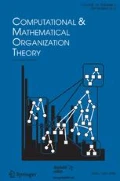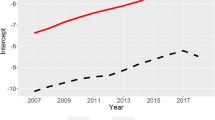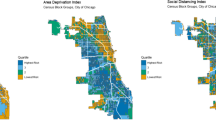Abstract
Ohio is leading the nation in an epidemic of overdose deaths, most of which are caused by opioids. Through this study we estimate associations between opioid drug overdoses measured as EMS calls and model-predicted drug misuse. The RTI-developed synthetic population statistically represents every household in Cincinnati and allows one to develop a geographically explicit model that links Cincinnati EMS data, and other datasets. From the publicly available National Survey on Drug Use and Health (NSDUH), we developed a model of opioid misuse and assigned probability of misuse to each synthetic individual. We then analyzed EMS overdose data in the context of local level misuse and demographic characteristics. The main results show locations where there is a dramatic variation in ratio values between overdose events and the number of misusers. We concluded that, for optimal efficacy, intervention strategies should consider the existence of exceptional geographic locations with extremely high or low values of this ratio.





Similar content being viewed by others
Notes
The data on overdoses has been perturbed to prevent exact identification of the venue, so all references to specific geographic locations are only suggestive and cannot be used to draw definitive conclusions.
References
Cajka JC, Cooley PC, Wheaton WD (2010) Attribute assignment to a synthetic population in support of agent-based disease modeling. Methods Rep 19:1009
DeMio T (2017) Ohio’s Overdose Deaths Soar Again, as State Ranks 2nd Worst in the Nation. Cincinnati Enquirer. www.cincinnati.com/story/news/2017/12/21/ohios-overdose-deaths-soar-again-state-ranks-2nd-worst-nation/973220001/. Accessed 7 May 2018
Knight C, Brookbank S (2018) Deters: Man Who Kidnapped 84-Year-Old ‘Deserves to Stay in Prison for a Long Time’. Cincinnati Enquirer. www.cincinnati.com/story/news/crime/crime-and-courts/2018/02/19/police-man-made-woman-buy-him-wendys-drive-him-drug-deal-knifepoint/352954002/. Accessed 10 May 2018
Ohio Department of Health (2016) Fentanyl and Related Drugs Like Carfentanil as Well as Cocaine Drove Increase in Overdose Deaths. www.odh.ohio.gov/health/vipp/data/rxdata.aspx. Accessed 7 May 2018
Rotuno-Johnson M (2017) Ohio Parents Overdose on Heroin at White Castle While Kids Are with Them. WCMH
Walinchus L (2018) How Can Ohio Cities Step Up Their Response To Overdoses? Make The Data Public. WOSU 89.7 NPR News. radio.wosu.org/post/how-can-ohio-cities-step-their-response-overdoses-make-data-public#stream/0. Accessed 7 May 2018
Wheaton WD et al (2009) Synthesizes population databases: a US geospatial database for agent-based models. Methods Report 2009(10):905
Author information
Authors and Affiliations
Corresponding author
Additional information
Savannah Bates received support from the Research Training Group in Mathematical Biology, funded by a National Science Foundation Grant RTG/DMS—1246991. Vasiliy Leonenko was supported by the Fullbright Visiting Scholar Program.
Rights and permissions
About this article
Cite this article
Bates, S., Leonenko, V., Rineer, J. et al. Using synthetic populations to understand geospatial patterns in opioid related overdose and predicted opioid misuse. Comput Math Organ Theory 25, 36–47 (2019). https://doi.org/10.1007/s10588-018-09281-2
Published:
Issue Date:
DOI: https://doi.org/10.1007/s10588-018-09281-2




